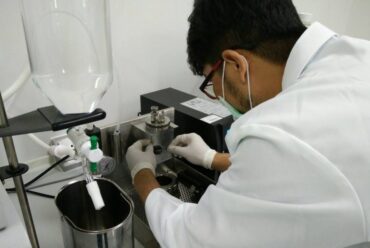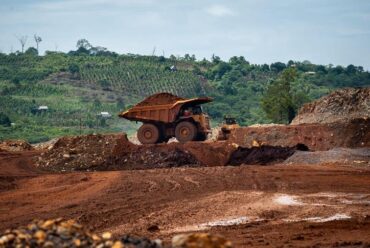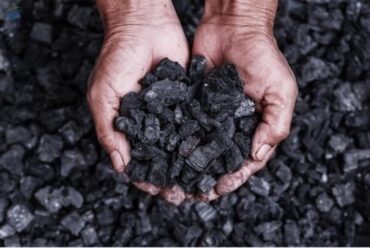Exploring the Hidden Benefits of Bauxite
Indonesia boasts a diverse range of natural resources, with some still unfamiliar with the name “Bauxite,” a key material in aluminum production used in various household products.
What is Bauxite?
Bauxite is a rock formed through the laterization process of original rocks rich in alumina, albeit with low silicon and iron content. It predominantly contains three aluminum minerals—gibbsite, diaspore, and boehmite. Despite being relatively unknown to many, it serves as the primary ore for aluminum production.
In Indonesia, this rock is abundant due to the country’s tropical nature, mined through surface mining. In 2019, Indonesia ranked sixth as the world’s largest bauxite producer.
Why is Bauxite Important?
Every natural resource worldwide plays a distinct role in meeting society’s needs. Similarly, bauxite plays a crucial role as the primary material for aluminum production.
In the packaging industry, bauxite contributes significantly to the manufacturing of cans and plastics used for food packaging. Before that, it undergoes processing to become aluminum, often mixed with other metals.
With its processed form, bauxite plays a vital role in effectively protecting food inside packaging, providing water-resistant properties. In this regard, bauxite undeniably plays a significant role in human life.
A Glimpse into Bauxite Reserves in Indonesia and Worldwide
Given the information above, you might be interested in the bauxite reserves in Indonesia and globally. Indonesia, the sixth-largest bauxite producer, holds 4% of the world’s reserves.
Before President Joko Widodo halted bauxite exports, Indonesia actively supplied raw materials to other countries. Indonesia’s role in providing bauxite was substantial, but with time, awareness grew, prompting efforts to stop raw material exports for domestic production.
Utilization of Bauxite in Various Industries
Bauxite finds diverse applications across industries such as automotive, electronics, chemistry, construction, and more. Understanding these applications is crucial; let’s delve into them:
- Construction Sector: Bauxite is crucial for making ceramics and serves as a non-slip aggregate for roads to prevent accidents.
- Automotive and Manufacturing Industry: Bauxite, formed through natural deposition processes, plays a vital role in the automotive and manufacturing sectors, serving as the primary source of aluminum for various vehicle components.
- Electronic Industry: The electronic industry greatly benefits from bauxite, using it in kitchen appliances and household tools.
- Food and Beverage Industry: As mentioned earlier, bauxite plays a significant role in the food and beverage industry as an additive in packaging, preventing leaks and ensuring the longevity of food and beverages.
- Chemical Industry: Bauxite’s benefits extend to the chemical industry, particularly in healthcare and dentistry. Known for containing minerals like boehmite, diaspore, and gibbsite, it serves as a catalyst, dental cement ingredient, adsorbent, and drying agent.
- Bauxite as an Abrasive: Surprisingly, bauxite is also used as a cleaning material due to its abrasive nature. It’s found in cleaning products like polish, toothpaste, and surface cleaners, effectively removing stubborn dirt.
Impacts of Bauxite
Mining Every government activity related to nature has both positive and negative impacts on the environment. It is essential for society to wisely consider these potentialities to maintain environmental balance. Here’s a detailed explanation:
- Positive Economic Impact: Bauxite has a positive economic impact due to its contribution to various industries like chemistry, construction, automotive, electronics, and more. Proper utilization of this resource can lead to significant economic benefits.Considering Indonesia ranks sixth globally in bauxite production, proper industrial processing can create numerous job opportunities, absorbing the local workforce.
- Negative Environmental Impact: On the flip side, open-pit bauxite mining has negative effects on the surrounding natural environment. This process triggers environmental damage, such as erosion, land craters, piles of rock fragments, and even landslides.Moreover, open-pit bauxite mining leads to soil compaction due to the use of heavy machinery during excavation and transportation.
The Future of Bauxite
Given the information and societal issues, you might be curious about the future of bauxite. Especially with continuous exploitation of natural resources potentially disrupting environmental balance, detailed insights are provided below:
- Environmentally Friendly Processing Technology: The energy consumption of technologies processing bauxite is substantial, potentially harming the environment over time. Therefore, it is crucial for the government to provide environmentally friendly technologies utilizing the nation’s intellectual capabilities.
- Alternative Raw Materials to Replace Bauxite: The availability of bauxite in nature is not infinite, especially with continuous extraction over an extended period. To counter this, alternative raw materials must be discovered, such as alumina-containing clays (multilayer), as substitutes for these rocks.
- Importance of Sustainable Management: President Joko Widodo emphasizes the importance of downstream industries as an effort to advance Indonesia. Thus, sustainable management practices in bauxite mining are necessary to ensure the availability of raw materials and their alternatives.
Conclusion
From the above explanations, it can be concluded that the role of bauxite in various sectors of life is significant. Additionally, addressing environmental challenges during the processing of these raw materials is crucial.
As responsible citizens, we should actively participate in environmental preservation efforts alongside communities, the government, and local residents to maintain the balance of nature constantly eroded by time. Furthermore, it’s essential to use eco-friendly products and recycle existing waste.
Read also: 7 Examples of Metal Mineral Mining Materials and Their Benefits







